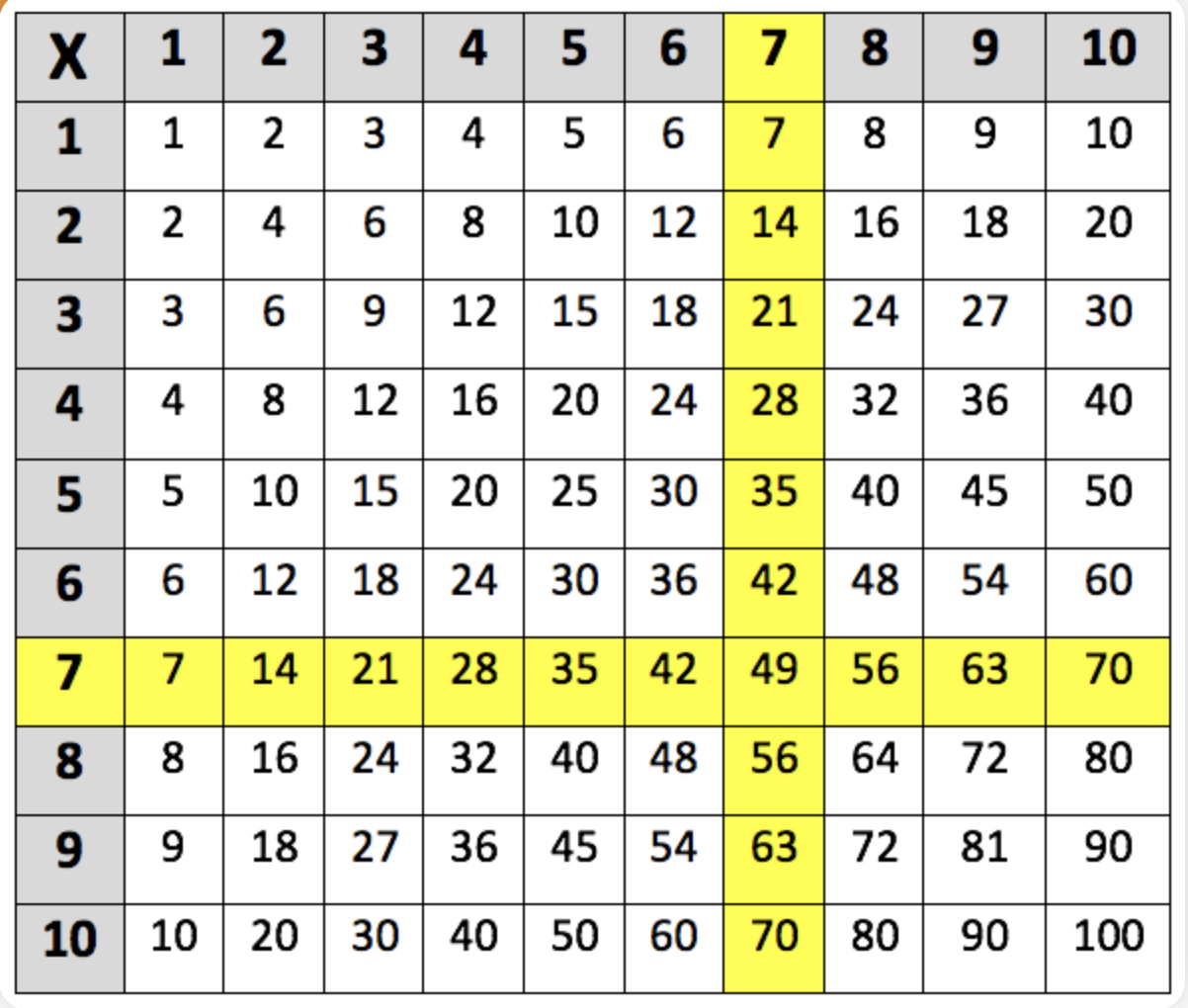It’s the age-old question parents have asked since the dawn of time(s tables): “Are there any ways of making learning times tables fun?” Mastering times tables is a vital skill that children must learn before they enter secondary school and thus it is important that parents try to find fun ways to teach times tables. With that in mind, here are eight highly effective tips on how to teach times tables the easy way.
Fun ways to teach times tables
1. Hang up a times table sheet/chart
This is an old technique but it’s very effective. First of all create a times table sheet and, go through it with your child, filling in each individual box together. Next step is to hang the completed chart up in a place where your child will see it regularly (e.g. their bedroom door, the fridge door, the cupboard next to the computer). Finally set a regular time for both you and your child to sit down and have a casual, no pressure run through a particular set of times tables, perhaps just before dinner. Remember, the more often they see and practice their times tables, the more likely they are to learn them.
2. Make sure they can walk before they can run
Teaching time’s tables should be like building a house – you need to start with the foundations! Teach your children the simplest tables first and save the harder ones (e.g. 7s, 8s, 12s) for the end. Two times tables are a good starting point, they’re pretty straightforward as they just involve doubling each number. 10s are simple too, as they just involve adding a zero to the number you’re multiplying by 10. Once they’ve mastered the basics, your child’s newfound sense confidence will help them conquer the more difficult tables.
3. Teach your kids some tricks
One of the great things about maths is that it’s full of tips and tricks – and times tables are no different. Our favourite trick involves using your fingers to figure out nine times tables. Start by spreading all 10 fingers in front of you. To figure out 9×1, put your left pinky down. What are you left with? 9 fingers! For 9×2 put your left ring-finger down. What are you left with? 1 finger and a gap followed by 8 fingers or 18. This trick works up to 9×9 (8 and 1 or 81). That said, when teaching children these tricks, encourage them to ask why these techniques work and the mathematical reasoning behind them.
4. Listen to some fun songs
What’s a great way to get information stuck in someone’s head? Yep, that’s right! Catchy music! We recommend checking out videos made by Youtuber, Mr.DeMaio, an American elementary school teacher who uses clever parodies of pop songs to teach kids their times tables. Our favourite is definitely his cover of Bruno Mars and Mark Ronson’s song Uptown Funk which aims to teach children their three times tables.
Another great resource is sharing other schools ideas! Have a look at the other songs used in times table learning.
5. Play a multiplication card game!
We’ve found a card game that makes learning times tables fun. The game is simple, two players draw a card from a deck. They then flip their cards over and the first person to correctly guess the total of the two cards multiplied together gets to put the cards in their winning pile. For example, if a 3 of hearts and a 7 of diamonds are flipped over, the first person who says 21 gets to keep the two cards. The person with the most cards in their winning pile at the end of the game wins.
6. Draw a Waldorf multiplication flower
One for more creative children. They start this activity by drawing the centre of the flower, in which they write a number between 2 and 12. They then draw 12 petals around the centre, with each petal containing the numbers 1 through 12. The last step is to draw another set of 12 petals which contain the centre number multiplied by each petal in the inner circle.
7. Quiz them regularly, but not incessantly
Once you think your child is getting the hang of their times tables, it’s time to put them to the test. It’s best to do this is when there’s nothing else really going on, like while you’re walking them to school or while you’re waiting for a bus. Also, try to normalise these drills by allocating a specific time of the week to quiz them, rather than springing it on them randomly, that way the drills aren’t too stressful.
8. Reward their efforts
When encouraging children to pursue something important, like timetables, there’s no harm in heightening their enthusiasm with a little reward. Remember that you shouldn’t just reward your child for getting answers right, though. Don’t be afraid to give them a treat if you can see they’ve been trying hard but haven’t quite mastered their times tables yet. This encourages persistence. Also, remember not to judge them if they get the answers wrong, learning should always be an enjoyable experience!

Times Tables
